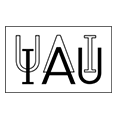Acta Historica Astronomiae Vol. 9 - Loettgers
Representation and transformation of Langley's map of the infrared solar spectrum
Andrea Loettgers, Bern
Abstract
In 1900, after 18 years of research, the American astrophysicist Samuel Pierpont Langley published the final report of his investigations in the infrared region of the solar spectrum. (See Samuel P. Langley: Annals of the Astrophysical Observatory of the Smithsonian Institution, Vol. 1, Washington: Goverment Printing Office, 1900.) In this report one finds three different types of maps of the infrared region, extending from 1.1 µm to 5.3 µm and showing the positions of 750 absorption lines: a bolograph, a line spectrum and a normal spectrum. (The bolograph, the line spectrum and the normal spectrum are accessible as pl. XX and XXIV at http://adsbit.harvard.edu/books/saoann/.) Looking at these three distinct forms of representation raises the questions: Why did Langley decide to use three representations for the visualization of his results? How are these distinct representations connected?
An analysis of the first question will provide further insight into the "connection between instruments, practices, and the visual", into the recording, evaluation and processing of the data and, furthermore, into the historical and disciplinary contexts. The prevailing trend toward the automation of measuring and registration processes, and the associated claim of 'mechanical objectivity', together with standards concerning precision and completeness set by Henry Rowland's photographic measurements in the visible part of the spectrum, turn out to be the strongest elements in the development of the different forms of representation and their respective transformations.
Bibliographical details:
Andrea Loettgers: Representation and transformation of Langley's map of the infrared solar spectrum. In: Klaus Hentschel, Axel D. Wittmann (Eds.): The Role of Visual Representations in Astronomy: History and Research Practice (Acta Historica Astronomiae; 9). Thun ; Frankfurt am Main : Deutsch, 2000, p. 118-135.



